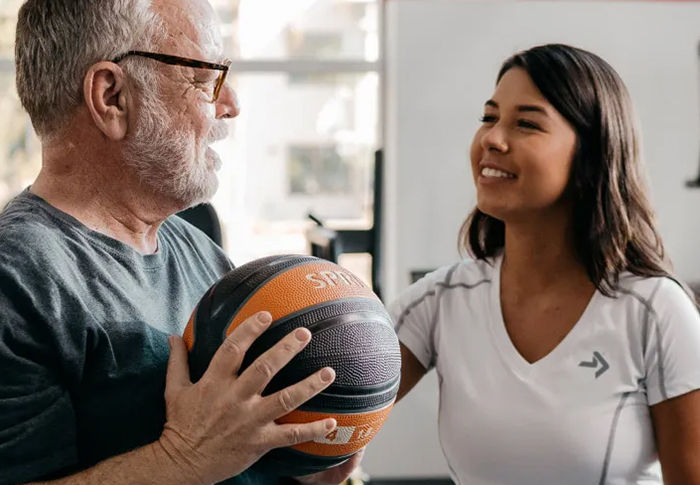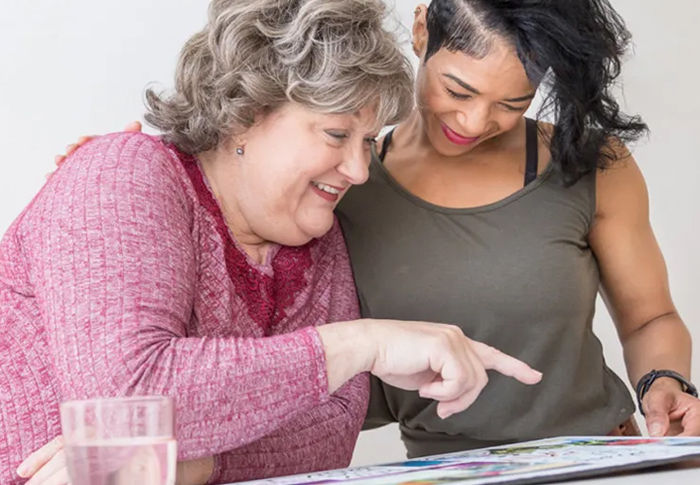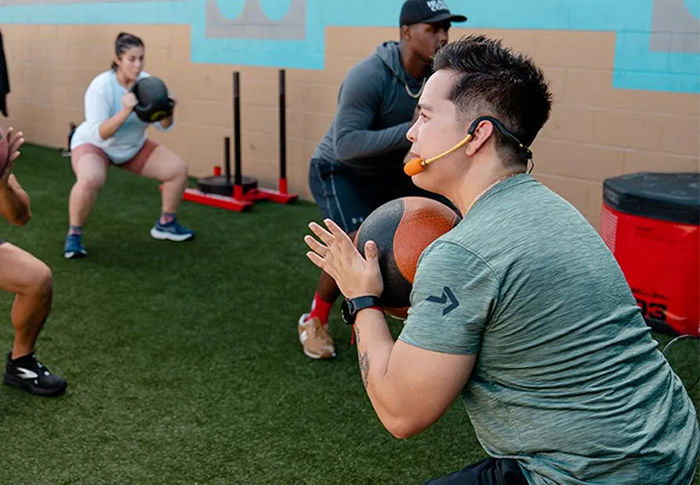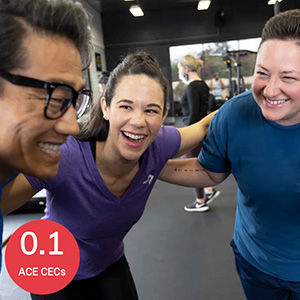
In this series, ACE experts answer your health and exercise questions. From nutrition to youth fitness, you’ll find detailed answers to many of the questions that may come up in your work with clients. Here, Dr. Erin Nitschke answers questions about how group fitness instructors and personal trainers can integrate behavior-change techniques into their communications and programs and class designs, including the role of empathy and how to avoid toxic positivity while trying to encourage and motivate clients and participants.

The Expert: Helping clients transform their health behaviors is about more than just sets, reps and routines. For group fitness instructors and personal trainers, behavior-change techniques are critical tools for supporting long-term client success. These approaches go far beyond surface-level motivation or a focus on a specific outcome like weight loss—they help clients develop autonomy, build lasting habits and create a deeper commitment to their wellness journey. This installment of Ask ACE takes a deep dive into some of the most important principles for you to not only understand but also apply in your daily work with clients.
Q: What does it mean to be “authentic” when I’m communicating with clients about change?
A: Authenticity is more than just being “real” or “honest”—it’s a deliberate, respectful way of showing up as your true self while also honoring the client’s journey. For health and exercise professionals, being authentic means aligning your communication, actions and intentions with your core values and the professional commitment to helping others. Here are some reasons why:
Authenticity Builds Rapport
Clients can sense when a trainer or instructor is just going through the motions or offering cookie-cutter advice. Authentic communication involves active listening, genuine interest and vulnerability (in the right measure). When you say, “I’ve been there too,” or “I know this part can be tough,” you’re not just sharing words—you’re building a bridge of trust.
Authenticity Helps You Avoid Performance Mode
Sometimes, especially in group fitness, exercise professionals feel pressure to always maintain high energy and enthusiasm. While positive energy is important, clients and class participants also appreciate realness and relatability. If a client or participant is struggling with motivation, telling them, “You’ve got this!” might not hit home unless it’s backed by acknowledgment of their current struggle. A more authentic approach might be, “I get that you’re feeling overwhelmed. Let’s focus on one thing today.”
Authenticity Means Using Language That Resonates
As a health and exercise professional, the language you use matters. Avoid jargon or overly scientific language when discussing behavior change. Instead, use conversational phrases that are both accessible and empowering. For example:
Inauthentic: “This behavior is maladaptive and detrimental to your success.”
Authentic: “That habit might be holding you back—how would you feel it we talked through some options together?”
Authenticity also involves being consistent. If you encourage clients to journal their food, but never discuss it again, it can come off as performative. Instead, follow up. Show that you care and are invested in their process.
Practical Tip: Use Motivational Interviewing Techniques
Motivational interviewing (MI) is a cornerstone of authentic client communication. It’s about exploring ambivalence, evoking the client’s own reasons for change and affirming their strengths. Use open-ended questions like:
“What does success look like and feel like for you?”
“What would need to happen for you to feel ready to make that change?”
These questions not only convey authenticity, but also shift the power dynamic. The client is the expert on their life—you’re the guide, not the guru.
Q: How can I balance being encouraging with being realistic in client conversations?
A: The best health and exercise professionals are cheerleaders and truth-tellers. Encouragement without realism feels hollow, and realism without encouragement can feel defeating. The balance is critical. Here are four approaches that can help you strike that balance.
1. Set Expectations Without Crushing Hope
Clients often arrive with ambitious goals: losing 30 pounds in a month, running a marathon in two weeks or sculpting a six-pack by summer. Rather than saying, “That’s not possible,” which may deflate them, pivot to a collaborative reframing:
“I love that you’ve set your sights high. Let’s build a plan that gets you there in a healthy and sustainable way.”
This approach validates their enthusiasm but brings the conversation back to reality.
2. Take Advantage of the Power of Process Goals
Instead of focusing solely on outcomes or product goals (e.g., weight loss, aesthetics), guide clients to process goals—those that emphasize consistent action. Examples include:
- Showing up for three sessions a week
- Prepping healthy lunches for work
- Getting seven to eight hours of sleep per night
This shift allows clients to celebrate wins that are fully within their control. It also reinforces a growth mindset—every action builds momentum, even if the external results aren’t immediate.
3. View Encouragement as a Practice, Not as a Pep Talk
Being encouraging isn’t just about saying the right thing in a motivational moment. It’s about cultivating an environment where clients and participants feel seen, supported and capable over time. You can:
- Celebrate non-scale victories (e.g., better energy, improved form, quality sleep).
- Offer positive feedback during sessions (“I can see how much stronger you’re getting!”).
- Recognize the emotional effort it takes to show up. Showing up to a session is often the biggest struggle for clients.
These small affirmations can mean everything to someone navigating self-doubt.
4. Avoid Toxic Positivity
Telling someone to “just stay positive” when they’re struggling can feel dismissive. A more balanced response might be, “It’s okay to feel frustrated. You’ve made progress even if it doesn’t feel that way today.” This validates their experience while reminding them of their resilience.
Practical Tip: Use the “Truth Sandwich”
One great method is the “truth sandwich.” Here’s how you make one:
- Start with a positive observation: “You’ve been really consistent with your workouts this month.”
- Address the challenge honestly: “That said, it seems like your nutrition plan has been tough to stick with lately.”
- End with encouragement and action: “Let’s come up with two small tweaks that could help you this week.”
This keeps the tone supportive without ignoring the challenge.
Q: What role does empathy play in fostering meaningful and lasting client relationships?
A: Empathy is arguably one of the most powerful behavior-change techniques—and it’s entirely free. As a health and exercise professional, empathy means more than just listening or nodding; it means feeling with the client and walking beside them as they process something challenging. Empathy also means seeing the world through their eyes and responding in a way that makes them feel understood and accepted without judgement. Here are three important things to keep in mind when considering empathy:
1. Empathy Strengthens the Coaching Relationship
Clients don’t just need a trainer—they need a human who sees and supports them. When a client feels like they’re just another time slot on a calendar, they disengage and lose motivation. But when they feel like the professional truly gets them, everything changes. Empathy builds the kind of trust that creates client longevity, deeper conversations and sustainable progress.
This doesn’t mean you have to agree with everything a client says or does. Empathy isn’t about excusing behavior—it’s about understanding the why behind it. Why did they skip workouts last week? Why are they struggling with meal prep? The answer isn’t laziness or willpower—it’s most commonly stress, overwhelm or fear.
2. Choose Empathy Over Sympathy
There’s a key difference between empathy and sympathy. Sympathy says, “I feel sorry for you.” Empathy says, “I understand what this feels like for you.” The former creates distance; the latter creates connection. As Brené Brown puts it, “Empathy fuels connection. Sympathy drives disconnection.”
When clients feel judged or pitied, they pull back. But when they sense true empathy, they’re more likely to share honestly, accept guidance and believe in themselves.
3. Empathy Enhances Self-efficacy
When clients feel understood, they’re more likely to believe in their ability to change. This belief—called self-efficacy—is a cornerstone of behavior change. Personal trainers and group fitness instructors who show empathy help clients and participants see setbacks as learning opportunities rather than failures.
It’s not about having all the answers. It’s about saying, “You’re not alone in this. I’m here to walk with you.”
Practical Tip: How to Demonstrate Empathy in Fitness Settings
How do you show empathy? Here are a few simple ways:
- Reflective listening: Repeat back what a client says in your own words to show you understand. For example, “It sounds like your schedule’s been chaotic lately, and that’s made it hard to stay consistent.”
- Affirm emotions: “That sounds frustrating. Anyone would feel that way.”
- Hold space: Sometimes the best support is silence (and this is usually one of the more difficult aspects of coaching). Let the client sit with their emotions without rushing to “fix” it.
Remember, change is hard. Clients might be facing years of emotional baggage around food, movement and self-worth. Empathy is the soil where change can take root.
Q: As a health and exercise professional, how can I share my own experiences without oversharing?
A: Personal stories can be incredibly powerful—but they can also be risky if not handled with care. In the world of health and wellness, where vulnerability, body image and emotional triggers are all part of the landscape, professionals must walk a fine line between helpful self-disclosure and inappropriate oversharing.
But why share it all? Clients and participants often appreciate when their coach or instructor opens up. Sharing your own journey can normalize struggle, create connection and model resilience. It can also humanize you—especially if you are seen as a “perfect” role model.
But storytelling should always serve the client’s needs, not the coach’s desire for validation. That’s why it’s so important to make sure you know why you are sharing something and who it’s really for. Before sharing a personal anecdote, ask yourself:
- “Is this helping the client?”
- “Am I sharing this to inspire or to vent?”
- “Is the story relevant to their situation?”
If the story builds empathy, offers hope, or makes a client feel less alone, it’s probably appropriate. If it turns the spotlight onto you, distracts from their goals, or centers your emotions, it’s probably not.
Yet, even helpful stories lose impact if they drag on. Your job isn’t to monologue—it’s to coach. Try to:
- Keep your story under two minutes.
- Include only details that support the client’s journey.
- Transition quickly back to them: “That’s what helped me stay on track—what do you think would work for you?”
Of course, there are some areas where oversharing can do more harm than good. Be cautious when talking about:
- Extreme weight loss methods you do not support.
- Disordered eating behaviors unless you’re trained in that area.
- Your current struggles, especially if they involve emotional distress or unresolved issues.
Your role is to be a safe, stable presence. Sharing vulnerabilities is okay—but they should be processed, not raw.
When in doubt, keep the focus on the client. A golden rule for health and exercise professionals is: Be relatable, not confessional. You can say:
- “I used to struggle with consistency too—what helped me was finding a routine that felt flexible.”
That’s relatable, brief and helpful. Avoid this version:
- “I used to binge at night and feel so ashamed afterward. Then I cried in my car for hours, and…”
Note the difference. The first offers a solution; the second shifts the emotional burden to the client.
Practical Tip: Use the "Experience Sandwich"
Just like the “truth sandwich,” here’s a storytelling structure that works well:
- Empathize with the client’s current situation: “I know how hard it is to stay motivated during the winter.”
- Share a quick, relevant experience: “A few years ago, I created a ‘five-minute rule’ that helped me keep moving.”
- Turn it back to the client: “Would something like that work for you?”
This method keeps the client at the center of the conversation, where they belong.
Use Behavior Change Techniques to Empower, Not Just Instruct
Behavior change isn’t a side note—it’s the foundation of truly effective coaching. While training plans, exercise cues and nutritional tips are important, they’re just tools. The real transformation happens in the conversation—in the empathy, authenticity and support you provide your clients and participants.
Group fitness instructors and personal trainers are more than motivators; they are guides, mentors and often the first line of emotional support in a person’s wellness journey. The ability to listen deeply, speak authentically and model vulnerability (without overstepping) separates great pros from merely good ones.
The most successful professionals understand this: change doesn’t come from pushing people harder. It comes from empowering them to believe that they can change—and that they’re not alone in the process.
Keep these reminders at the forefront of your practice:
- Authenticity builds bridges: Speak like a human, not a coach on autopilot.
- Realism and encouragement are partners: Keep the dream alive but rooted in achievable goals.
- Empathy is the engine of change: People don’t change when they’re judged—they change when they’re seen.
- Your story can help—but it’s not the main character: Share to inspire, not to unload.
With these behavior-change techniques in your toolbox, you will elevate the client experience to a truly transformational journey.
Helpful FAQs
1. What’s the difference between motivation and behavior change?
Motivation is a feeling—behavior change is a skill. Motivation comes and goes, but behavior change techniques help clients act consistently even when they don’t feel motivated. As a professional, your job is to collaborate with clients to uncover strategies that stick.
2. How do I deal with a client who doesn’t open up?
Build trust through small, consistent actions. Show up on time, follow up on conversations, and model authenticity. Avoid pressuring them to share. Let them lead and always meet them where they are with empathy when they do open up.
3. Is it okay to push a client who says they want results but doesn’t follow through?
Yes—but with compassion. Explore what’s behind the resistance. Ask open-ended questions like, “What’s getting in the way?” or “What does support look like for you right now?” Often, resistance is a signal, not defiance.
4. Can group fitness instructors use these techniques too?
Absolutely. Group settings are great for using empathy, authenticity and motivational cues. While you may not go as deep as in one-on-one sessions, using inclusive language, recognizing individual effort and creating a supportive culture makes a huge impact.
5. What if I don’t feel “qualified” to talk about emotional or mental barriers?
You don’t need to be (and should not act as) a therapist to show empathy or support. Stay within your scope: listen, affirm and guide. If a client’s challenges are beyond your expertise, refer them to the appropriate mental health professional. Your role is to walk alongside—not carry the whole load.
Expand Your Knowledge
ACE RRAMP Approach™: Cultivating Behavior Change through Group Fitness
Introducing the ACE RRAMP (Respect, Recognition, Alignment, Mistakes and Participant) Approach™. Learn a unique class design and delivery system that applies to any format and any participant. Experience how simple it can be to turn group experiences into personal ones to help improve health, fitness and overall quality of life through positive behavior change. Explore the science behind how this approach was created and why it works and leave with actionable steps to implement it throughout every class experience you teach.
Interview Strategies to Support the Early Success of New Clients
Unlock the full potential of your client-trainer relationships with this comprehensive course on interview strategies for the initial consultation. Whether you're a new trainer looking to establish your professional footing or a seasoned coach seeking to refine your approach, this course will equip you with the tools to foster trust, gather meaningful insights, and set the foundation for long-term success. Learn how to design thoughtful, supportive first sessions that empower clients to engage with physical activity from day one—without movement or assessments, just impactful conversation. Whether you're just starting out or have years of experience, this course will enhance your ability to lead intentional, impactful conversations that support clients' long-term engagement with physical activity.





 by
by 





